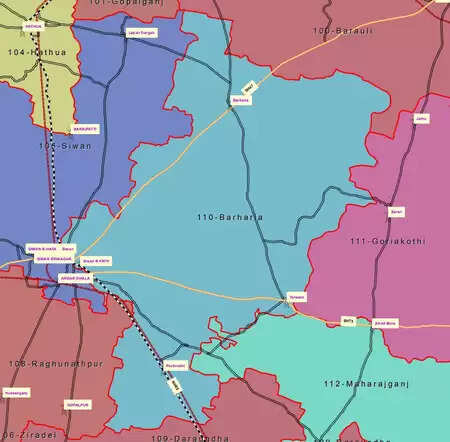Patna, October 14 (IANS). The Badharia meeting constituency in the Siwan district Bihar has an important identity in the politics of the state. This area consists mainly of 23 grams of Panchayats from Barhariya and Pagukrhi blocks and is completely agriculture. This area is irrigated by the tributaries of the Gandak River and is spread across the fertile plains of the ganga, where agriculture is still the backbone of the economy. Farmers cultivate paddy, wheat and pulses here, while a large number of people migrate to other states in search of work. The nearest railway station to Barharia is in Siwan, the district headquarters, about 15 kilometers away. Gopalganj is 40 km to the north, Chhapra is 50 km to the southeast, while major cities such as Deoria (70 km) and Ballia (85 km) are located on the border of Uttar Pradesh. The state’s capital Patna is about 145 kilometers from here. Over the past few years, Badharia has seen gradual improvement in basic amenities such as roads, electricity and education. However, employment, migration and agricultural crisis remain the most important issues here. This seat was founded in 1951. In the first years, the congress had dominance here. The party won three consecutive term from 1951 to 1957. But after 1957 there was a change in the political environment. During this period, the Communist Party of India (CPI) won twice, Praja Socialist Party and Bharatiya Jan Sangh won once. Badharia -seat was abolished after the 1972 election. This region has remained missing on the political map for almost three decades. This seat once again arose after the recommendations of the Demarcation Commission in 2008. Hereafter, when the election was held here in 2010, Janata Dal (United) made a return and won this seat. JDU won both the 2010 and 2015 elections. However, in the 2020 elections, however, Rashtriya Janata Dal (RJD) defeated JDU and won this seat. According to the data from the Electoral Commission in 2024, the total population of the Badharia constituency is 5,29,497, of which men are 2,73,093 and women 2,56,404. At the same time, the total number of voters is 3,15,304, which includes 1,65,202 men, 1,50,093 women and 9 third gender voters. The voters here come mainly from rural and farming class. There is a significant participation of Yadav, Pashwan, Rajbhar, Kurmi, Muslim and Upper Caste classes in caste comparisons. Basic issues such as agriculture, irrigation, roads and employment are very important in the Barharia meeting. Apart from this, the migration of youth is looking for work, a lack of higher education and health facilities major challenges. -—IANS PSK/ABM
Bihar election: Agriculture, migration and employment is important in Badharia, understand the comparison
